|
8th August 2020
Passing the 100: This is the third in a series of four blogs about the use of the set of photographs of LEO I that will ultimately enable us to rebuild a virtual LEO.
Passing the 100
I never thought that we might find more than 100 photographs taken inside the calculator room at Cadby Hall, home to LEO. Photographs 99 and 100 were found earlier this week, 99 (reproduced below) was found in the online Alamy collection and shows John Pinkerton the LEO Chief Engineer at the Engineer's console in the late 1950s and suitably photograph 100 is the 'team' reunited together at the shutdown of LEO I in 1965.
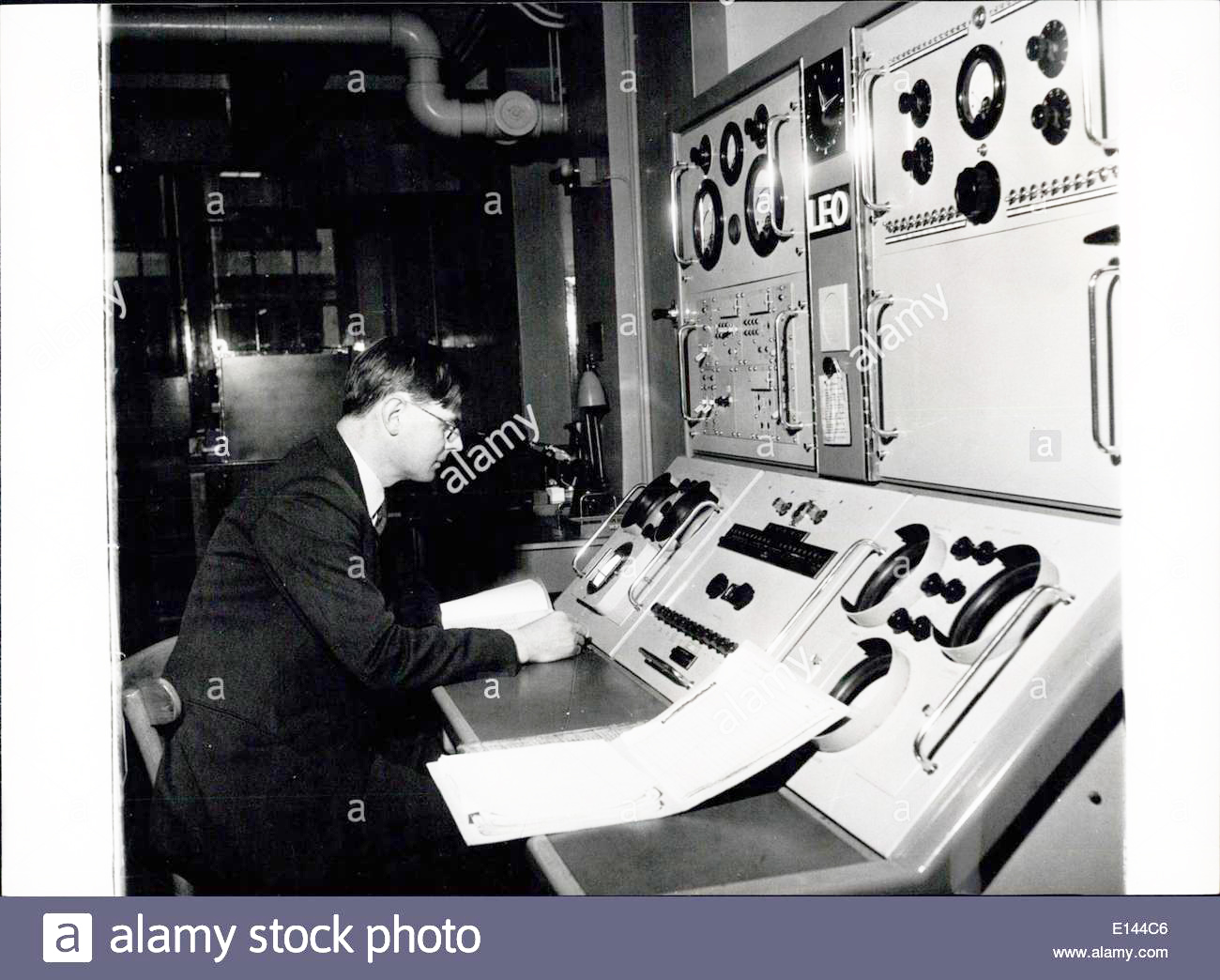
My theme for this the third in my series about the LEO photographs is to say; don't forget to look at the detail. The cameraman will have a focus in mind, the point of the picture! However, it has been the detail in the background that has helped hugely to piece together our knowledge of the room that was home to LEO.
Photograph 99 is a good case in point. The LEO Engineer's panel contains a lot of useful detail of course, from the technical details to those nice rounded edges that make up this curious piece of equipment. Look at the time on the clock, 11.15, and that 'note' stuck on the panel central and below the clock. Now look at photographs 52 and 19 using the LEO I PhotoApp here: (both copied below)
http://www.computinghistory.org.uk/leodev/photos/
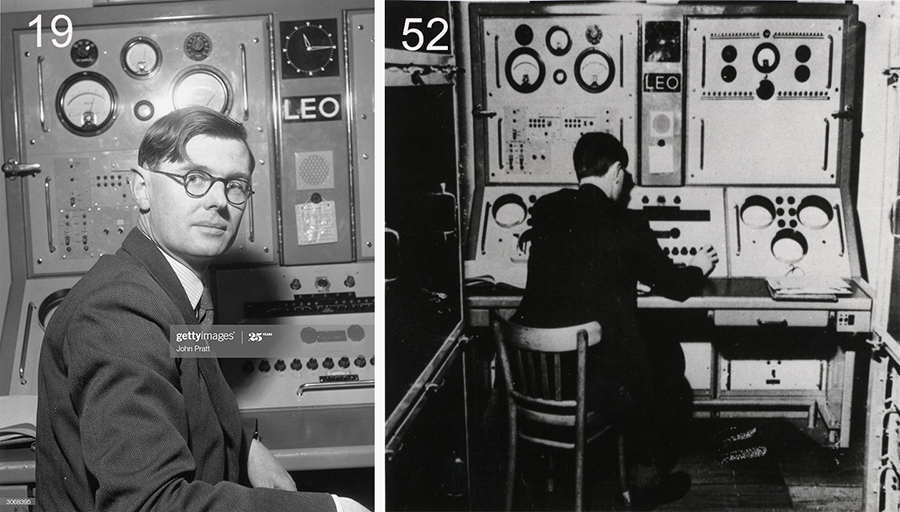
Pinkerton, the clock, the note and other things all point to the fact that these pictures were taken at the same time or a few minutes away from each other according to the clock. The Getty image also identifies the photographer and a picture of such quality suggests that 99 and 52 are copies of copies and something better is out there, maybe?
Use the LEO I PhotoApp to look at photo 83 - what happened to the LEO sign? and at photo 17, the clock is different? The LEO Engineer's panel changes quite a bit over time and is a good 'clock' to judge the age of photographs.
Back to photograph 99 and let me introduce you to a detail that has proven very useful. Look at the top of the picture, at the pipe. Probably a heating pipe it is routed right down the middle of the room in which LEO stands. Over and over again it has been in the background and has provided a clue to help orientate a photograph.
Photo 14 is a good example.
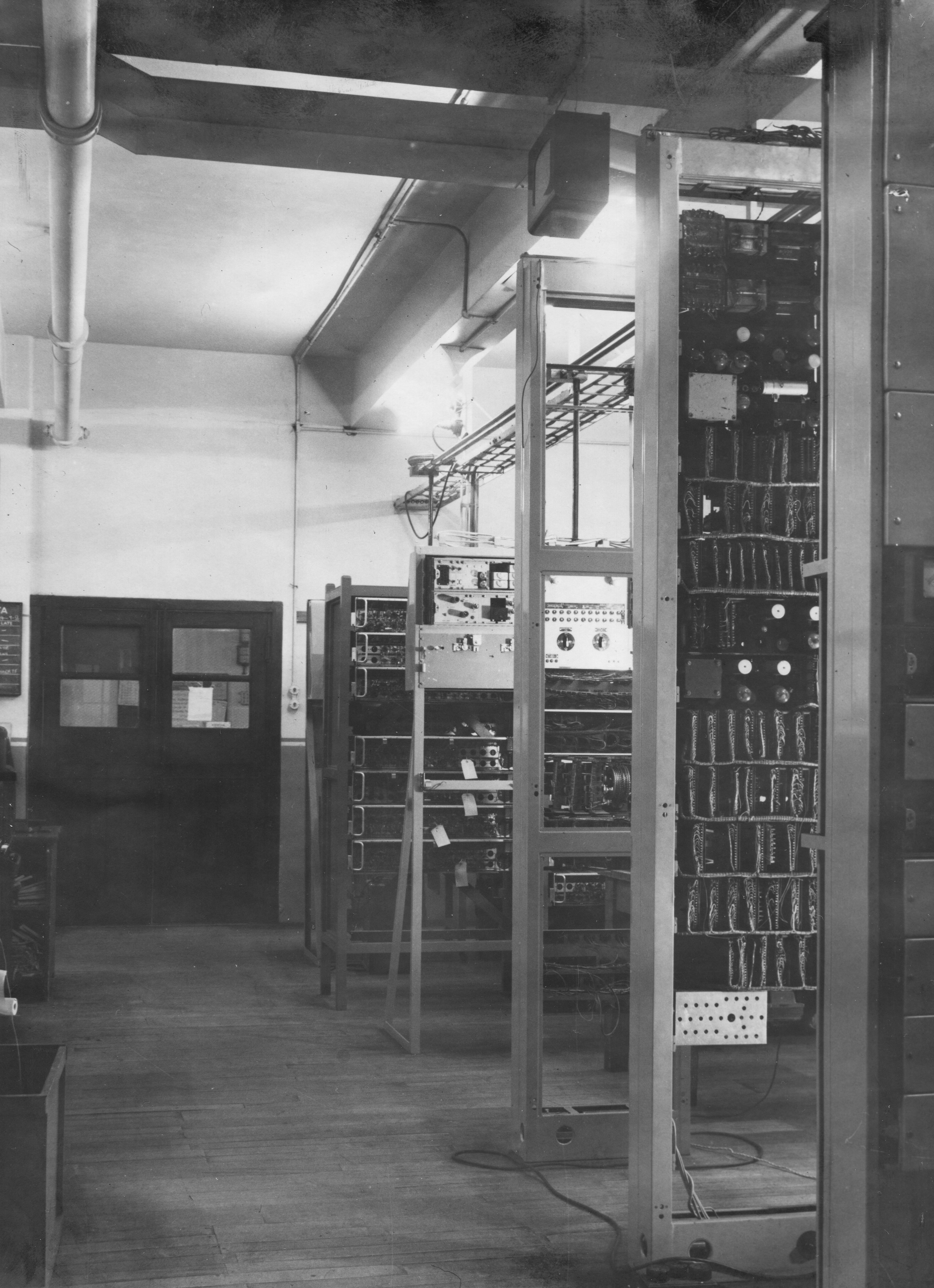
Taken in an unusual direction it threw me at first. However, spotting the pipe on the top left-hand side of the picture immediately set the photographer in the right place and proved that we were looking (unusually) in the direction of the data preparation room doors with the STC (to be abandoned) equipment dominating the right-hand side of the room from that point of view.
Photo 20, when you first look, might be taken at any angle and was in the construction phase of LEO when things did get moved around a bit. But look carefully, peek through those racks and you can see the pipe!
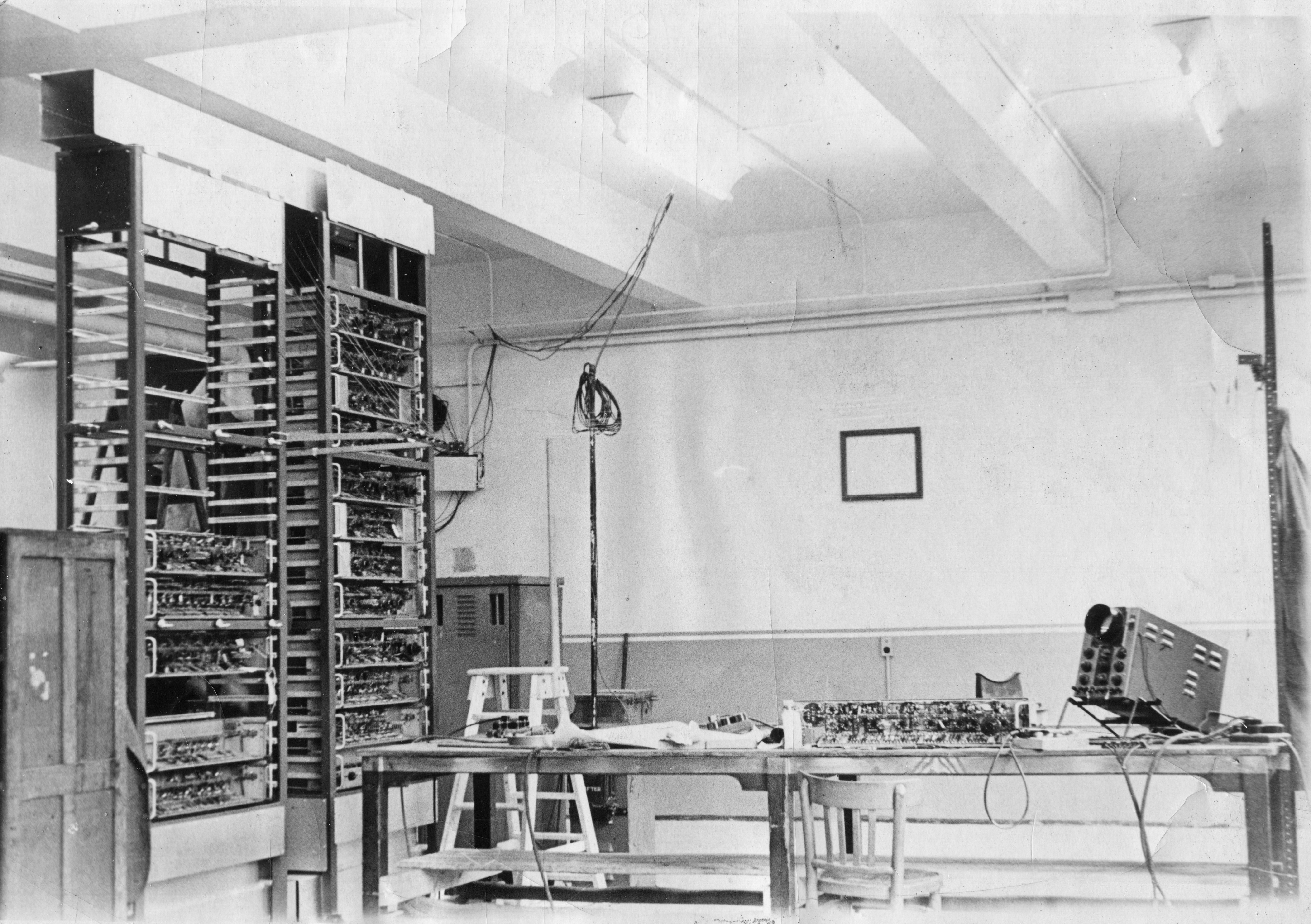
Immediately we know where we are and can place the photographer and direction he is facing. Whilst we are here in photo 20, that thin stripe around the wall often sets the period in which the photo was taken. The room was originally Lyons Ice Cream sales office and the stripe is part of the original decoration. After a room 'makeover' it would disappear, so the stripe always says - early work on LEO!
Photograph 1 (like others) clearly shows the raised floor on the right upon which we find the LEO racks, or do we? Are the LEO racks resting on this false floor 18 inches above the real floor?
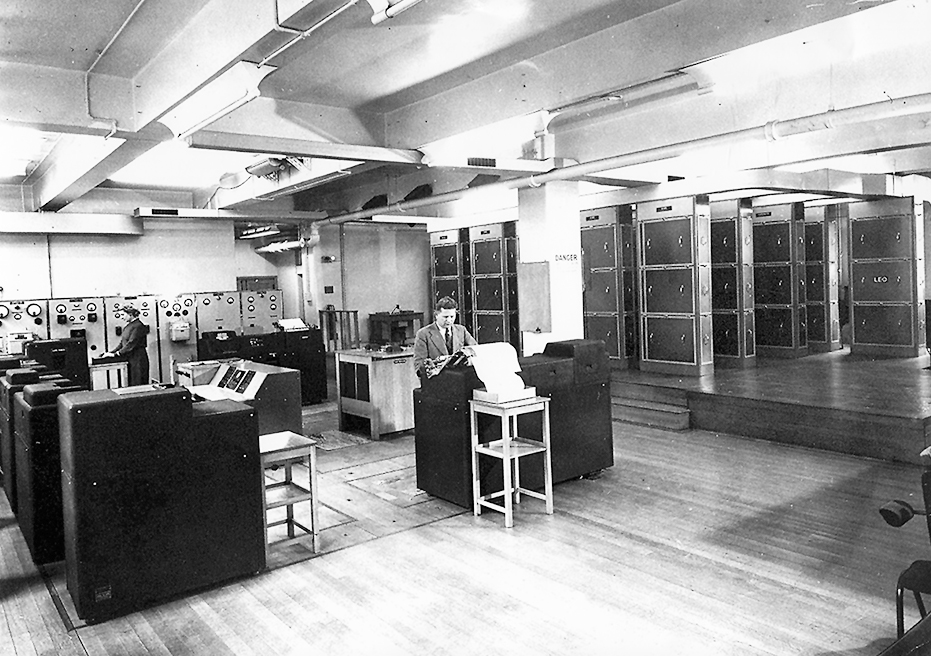
Take a look at photograph 21 below. In this picture, you can see that the racks have a 'bottom piece' that you cannot see in pictures where the raised floor is present.
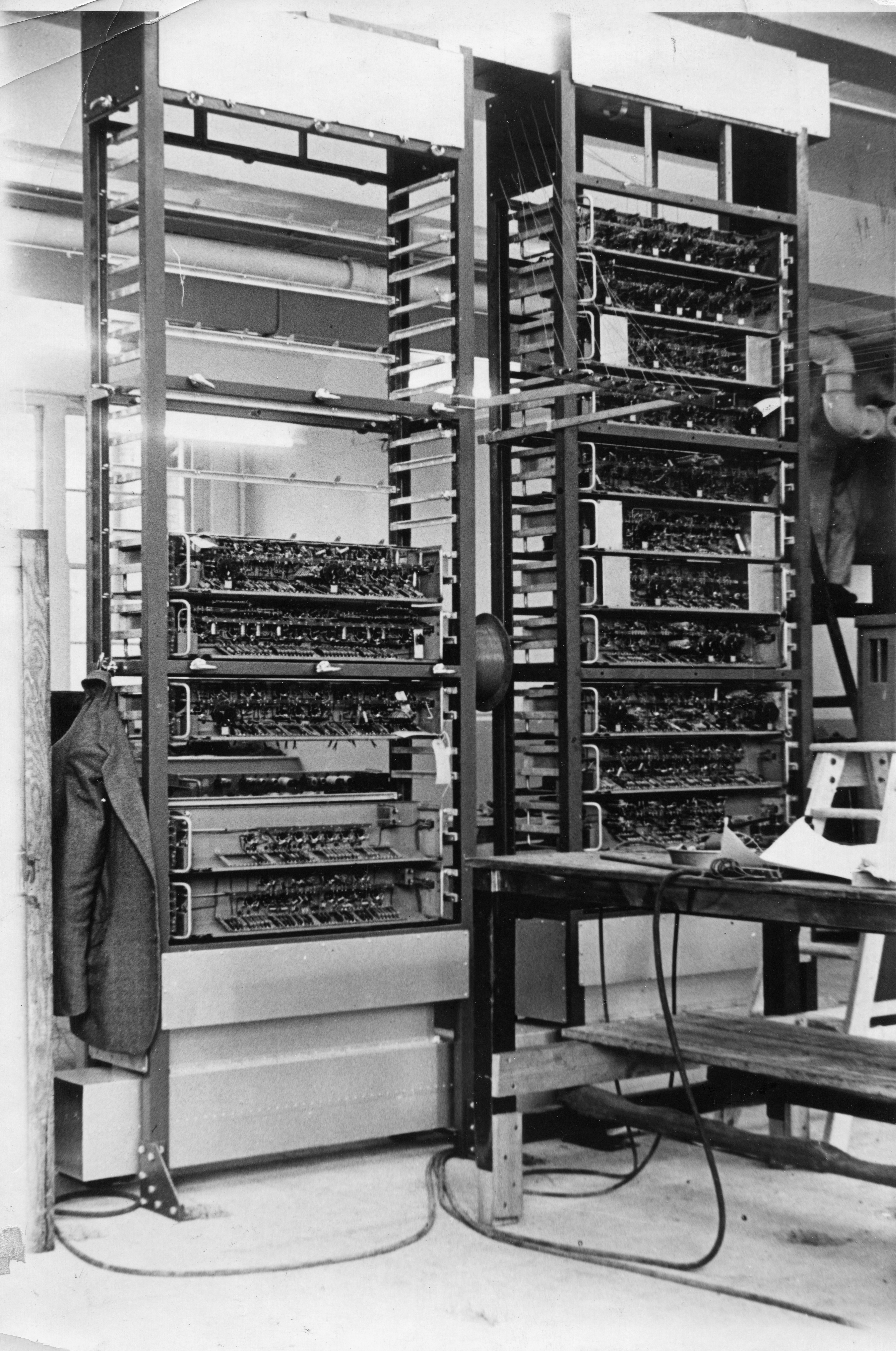
At the bottom of the photograph 21 racks, you can spot the triangular feet that are used to fix the racks into the real floor. Also visible is part of the ventilation system at the bottom where the cooling air is fed up through the racks and extracted at the top. This photograph allows us to say that LEO's racks were mounted on the real floor and a raised floor was constructed around them. Nice work for the Lyons carpenters. Notice the pipe in the top right-hand corner, reminding us where this was taken.
There is much detail in the photographs that we are still unraveling and today after celebrating the arrival of photograph 100, you guessed it, we are studying photograph 101 (copied below).
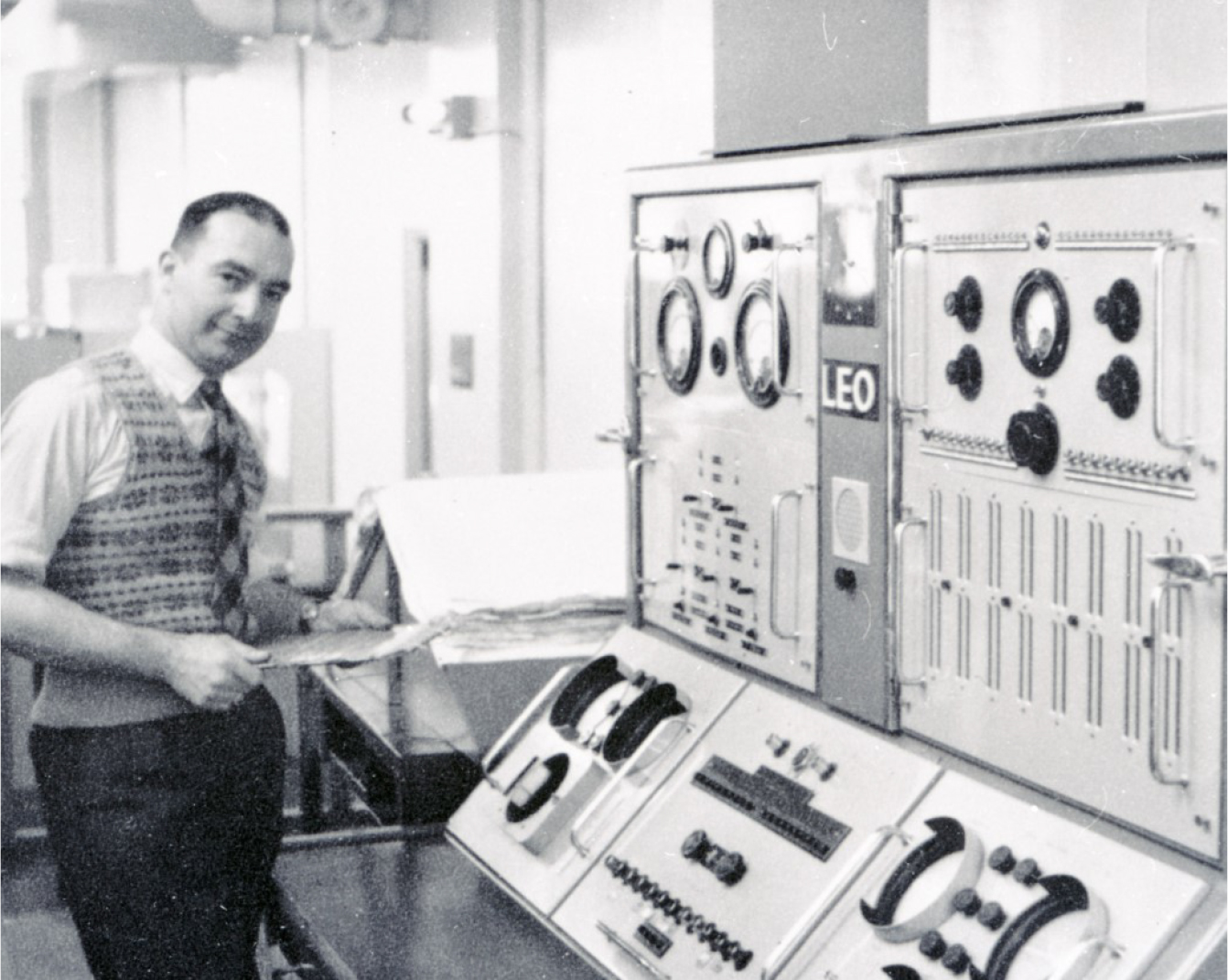
How many more are out there?
By the way, both the Getty and Alamy sites are wonderful collections of images from the past and well worth a look;
Getty: https://www.gettyimages.co.uk/
Alamy: https://www.alamy.com/
Next time, we ask the question about making sense of colour in a black and white world.
Posted by: Chris Monk
|






